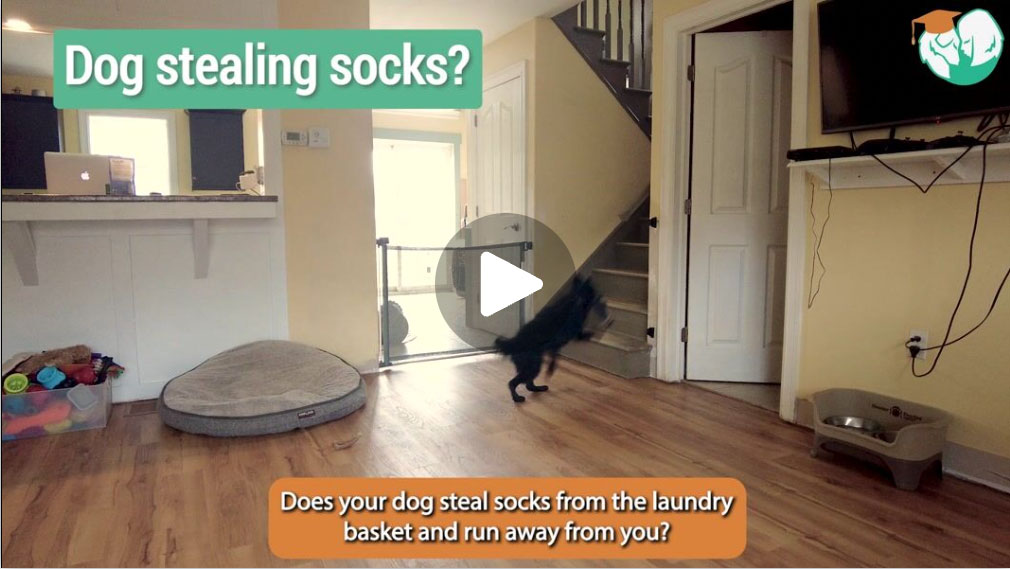 iHeartDogs is reader supported. Some of the links below may be paid affiliate links, where we receive a small commission on a product at no additional cost to you.
iHeartDogs is reader supported. Some of the links below may be paid affiliate links, where we receive a small commission on a product at no additional cost to you.
Beagles are friendly and active dogs that make great family pets. However, they can be prone to resource guarding, which is a behavior where a dog becomes possessive and protective over their belongings, such as food, toys, or even people. Resource guarding can lead to aggression and other undesirable behaviors, which can make it challenging for dog owners to manage their pets. In this article, we will discuss the signs that indicate that your Beagle is resource-guarding and provide some tips and techniques to help you stop this behavior.
Note: Resource guarding can be a challenging problem for a dog owner. In addition to the tips below, you may want to consider consulting the help of a professional. Two excellent online courses we reviewed for resource guarding are SpiritDog and K9 Training Institute.
1. Understand What’s Triggering Your Beagle’s Resource Guarding
The first step in addressing resource guarding is to identify the specific triggers causing your Beagle to display this behavior. Observe your Beagle closely and take note of which resources they guard and under what circumstances. Common triggers include:
- The presence of other dogs or pets
- Approach of family members, especially children
- Sudden movements or loud noises near the guarded resource
Understanding the triggers allows you to manage the environment effectively, preventing incidents before they occur.
2. Desensitization and Counter-Conditioning Your Beagle Against Resource Guarding
Desensitization and counter-conditioning are powerful techniques to help your Beagle overcome resource guarding. Desensitization involves gradually exposing your dog to the triggering situations, starting with low-intensity encounters and gradually increasing the intensity. Counter-conditioning, on the other hand, involves teaching your dog to associate the presence of the trigger with positive experiences.
For example, if your Beagle guards their food bowl when approached, start by standing a considerable distance away while they eat. Gradually decrease the distance over time, rewarding your dog with praise or treats when they remain calm. This process helps your dog associate your presence near their food with positive outcomes, reducing their need to guard the resource.
3. Teach Your Beagle the “Leave It” Command
Training your Beagle to respond to the “leave it” command is essential in addressing resource guarding. This command tells your dog to release whatever they’re holding or to stop focusing on a particular item. To teach this command:
- Hold a treat in your closed hand and present it to your Beagle.
- When your dog sniffs or paws at your hand, say “leave it.”
- Once your dog stops trying to get the treat, praise them and reward them with a treat from your other hand.
- Gradually progress to using the command with other objects, such as toys or food bowls.
Using the “leave it” command consistently can help prevent resource guarding incidents before they escalate.
4. Teach Your Beagle the “Drop It” or “Give” Commands
Similar to the “leave it” command, teaching your Beagle to “drop it” or “give” is crucial in managing resource guarding. These commands instruct your dog to release an item from their mouth or willingly give it to you. To teach these commands:
- Start by playing with a toy your dog likes but doesn’t typically guard.
- While your dog is holding the toy, say “drop it” or “give” and offer a high-value treat.
- When your dog releases the toy, praise them and give them the treat.
- Gradually progress to using the command with more valuable items.
5. Practice the “Trade-Up” Technique with Your Beagle
The “trade-up” technique involves offering your Beagle a higher-value item in exchange for the one they’re guarding. This method teaches your dog that surrendering a resource can lead to better rewards, reducing their need to guard. Practice this technique by offering a high-value treat or a favorite toy whenever your dog is guarding a less valuable item. Over time, your dog will learn that giving up a guarded resource is a positive experience.
6. Avoid Punishing Your Beagle
Punishing your Beagle for resource guarding can exacerbate the problem and lead to increased aggression. Instead, focus on positive reinforcement and reward-based training to modify your dog’s behavior. By consistently rewarding your dog for desired behaviors, you reinforce the idea that there’s no need to guard resources, as good things happen when they share or relinquish them. Remember that patience and consistency are key when working with a dog that displays resource-guarding behaviors.
7. Try an Online Training Program for Resource Guarding
If your Beagle’s resource guarding behavior is severe or doesn’t improve with consistent training, it’s crucial to consult a professional dog trainer or behaviorist. These experts can help identify the root cause of the issue and create a tailored training plan to address the problem effectively. In some cases, medical issues or anxiety may contribute to resource guarding, and a veterinarian or veterinary behaviorist can help diagnose and treat these underlying conditions.
Our 2 favorite online courses are:
1. SpiritDog’s “Stop Resource Guarding” Course
The Stop Resource Guarding training course, attended by 243 students, consists of 42 comprehensive lessons that teach you science-based, fear-free techniques to help your dog trust you around their treasures and train a solid “Drop It” cue. With lifetime access, step-by-step instructions, and a certificate upon completion, this course will transform your relationship with your dog and eliminate resource guarding behaviors.
2. K9 Training Institute’s “Dog Masterclass”
More than just a resource guarding course, this more comprehensive training course tackles any behavior problem you might face with your dog.
3 Signs Your Beagle is Resource Guarding
- Growling or snarling: If your Beagle growls or snarls when you approach them while they are eating or playing with their toys, it can be a sign of resource guarding.
- Stiff body language: Beagles that are resource guarding often exhibit stiff and rigid body language when you approach them while they are eating or playing with their toys. They may also stand over their food or toys and refuse to move.
- Aggressive behavior: In severe cases, resource guarding can lead to aggressive behavior. If your Beagle shows aggression towards you or other family members when you try to take away their food or toys, it’s important to address the issue immediately to prevent any further escalation.
In conclusion, resource-guarding behavior can be common in Beagles, and it is important to address it to prevent any potential aggressive behaviors. It is crucial to observe your Beagle’s body language, behavior, and environment to identify any signs of resource guarding. Seeking the help of a professional dog trainer or behaviorist can be helpful in addressing resource guarding in Beagles. Through positive reinforcement training and environmental management, it is possible to modify your Beagle’s behavior and prevent any potential incidents of resource guarding. By being patient, consistent, and committed to addressing this behavior, you can ensure a happy and healthy relationship with your furry companion.
Note: Resource guarding can be a challenging problem for a dog owner. In addition to the tips above, you may want to consider consulting the help of a professional. Two excellent online courses we like for resource guarding are SpiritDog and K9 Training Institute.


 Toledo, United States.
Toledo, United States.
